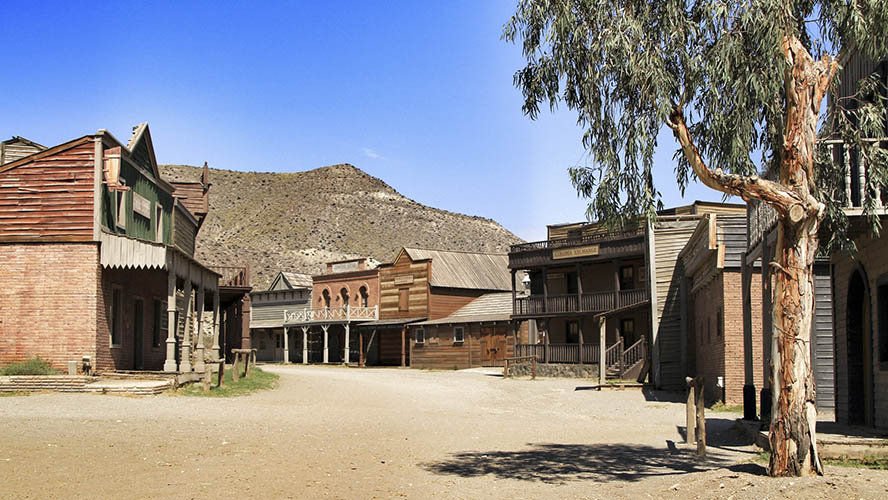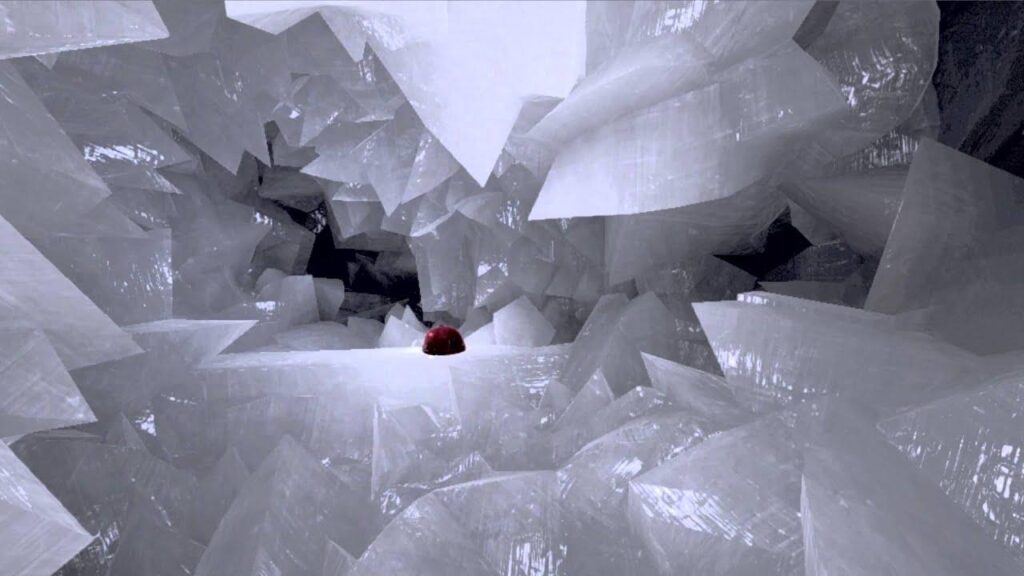Tourist Information
cabo de gata
Cabo de Gata, located at the southeastern tip of the Iberian Peninsula in the province of Almería (Andalusia), is one of Spain’s most impressive and unique natural areas. It is Andalusia’s first maritime-terrestrial natural park, established in 1987, covering over 63,000 hectares, including marine zones that host extraordinary biodiversity. Its volcanic origin gives it an arid, almost desert-like landscape of great geological value, with dark rock formations, steep cliffs, and a rugged coastline dotted with coves and pristine beaches. The climate is another distinctive feature: it is considered the driest area in Europe, with very little annual rainfall and more than 300 days of sunshine per year, making it an ideal destination to visit almost any time of the year.
Cabo de Gata-Níjar Natural Park offers a wide variety of ecosystems, ranging from salt flats and wetlands to volcanic areas, along with extensive fine sandy beaches and ecologically rich seabeds. The Cabo de Gata salt flats, located along the coast, are a key site for birdwatching, including the pink flamingo, which uses the area as an important stopover and nesting site during its migrations. The beaches are another major attraction, with highlights such as Los Genoveses Beach, a wide bay of golden sand with no buildings, and Mónsul Beach, famous for its natural beauty and rock formations sculpted by wind and sea. There are also hidden coves like Cala de Enmedio and Cala del Plomo, accessible by foot or by sea, offering a more intimate and wild setting.
In addition to its natural surroundings, Cabo de Gata is home to a number of villages and rural settlements with a special charm. San José is the main tourist center, offering sustainable accommodations, restaurants, and services, while maintaining the tranquility that characterizes the entire area. Other towns, such as Las Negras, Agua Amarga, Rodalquilar, and the town of Níjar itself, retain traditional Andalusian architecture, with whitewashed houses, narrow streets, and a relaxed way of life. Níjar, in particular, is known for its artisanal traditions, especially in ceramics, esparto grass crafts, and textiles.
Cabo de Gata is also an ideal destination for active and sustainable tourism. Numerous hiking trails traverse cliffs, old mining paths, and volcanic landscapes, such as the trail connecting Las Negras with Cala de San Pedro. Water activities like kayaking, paddleboarding, and diving are very popular due to the clarity of its waters and the richness of its seabed, which is protected as a reserve. Ecotourism and respect for the environment are fundamental pillars of the area’s tourism development, avoiding mass construction and promoting the conservation of a unique European landscape.
In short, Cabo de Gata is a destination that combines wild nature, local culture, pristine beaches, and a strong commitment to sustainability. It is the perfect place for those looking to disconnect, enjoy authentic landscapes, and have a profound experience in contact with the purest Mediterranean.
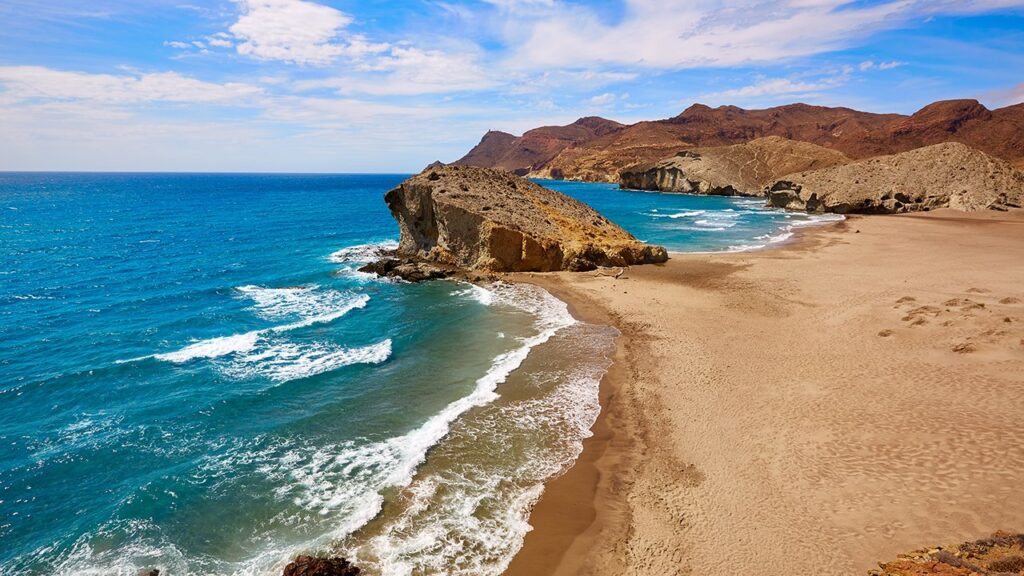
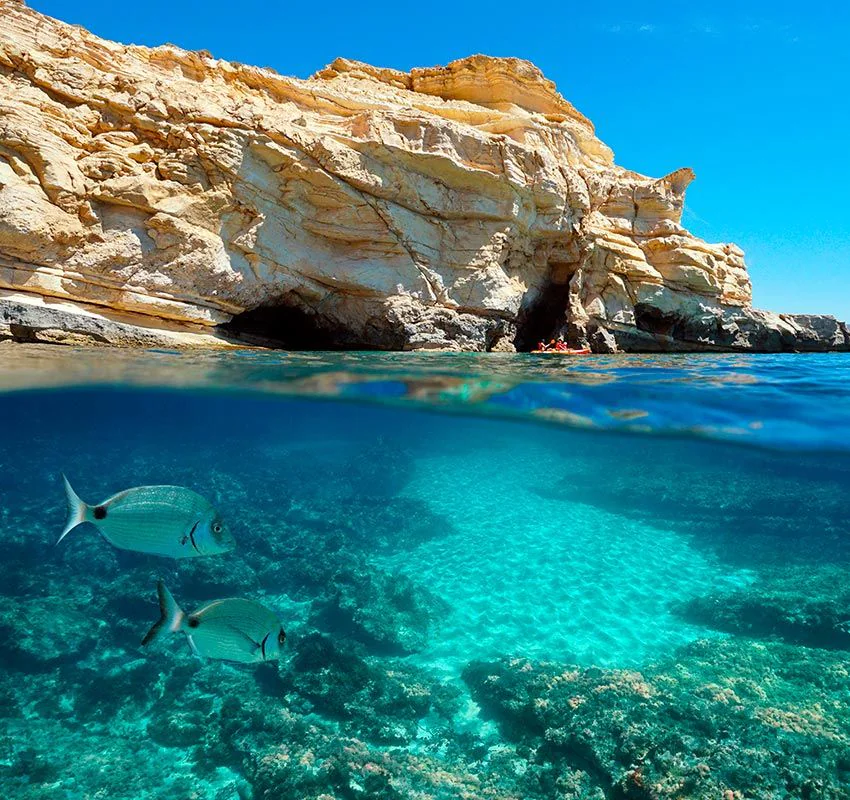
Vera
Located in the heart of the Levante Almeriense, Vera is much more than a sun-and-beach destination. This charming Andalusian town combines tradition, history, and modernity, making it an ideal place for those seeking an authentic experience by the sea.
One of Vera’s main attractions is its naturist beaches, famous throughout Europe. Vera Playa is home to the largest naturist complex on the continent, where freedom, respect, and connection with nature take center stage. With more than 6 kilometers of coastline, you’ll find fine sandy beaches and crystal-clear waters, such as El Playazo, perfectly suited for enjoying with family, as a couple, or on your own.
But Vera captivates not only with its coastline. Its historic center retains the charm of Andalusian white villages, with cobblestone streets, welcoming squares, and a rich cultural heritage dating back to the Muslim era. Don’t miss the Fortress Church of Our Lady of the Incarnation, nor the local markets where time seems to stand still.
And if there’s something that completes the experience in Vera, it’s its gastronomy. The local cuisine stands out for its fusion of land and sea, with dishes such as gurullo with rabbit, migas, or exquisite fresh fish from the Almerian coast. All of this is enjoyed with regional wines and accompanied by the warm hospitality of the locals.
Vera is a place to disconnect, reconnect, and let yourself go. Come and discover it. Nature, flavor, and freedom await you.
mojacar
Mojácar, perched on a hill overlooking the Mediterranean, is one of the most beautiful towns in Andalusia. Its old town, with whitewashed houses and narrow streets, offers stunning viewpoints and an atmosphere rich in history and Moorish essence.
Its more than 17 km of beaches cater to all tastes: from quiet coves like Granatilla to livelier areas such as Playa de las Ventanicas or El Cantal. It’s an ideal place to relax, practice water sports, or simply enjoy the sun.
Mojácar’s gastronomy combines traditional Andalusian flavors with Arab influences. Notable dishes include gurullos with rabbit, grilled dried octopus, meatball soup, and the typical Mojácar salad, all enjoyed with good wine or beer by the sea.
Mojácar is also a land of festivals. Among its most important celebrations are:
Moors and Christians (June): featuring spectacular parades and a festive atmosphere throughout the town.
Patron Saint Festivities of San Agustín (late August): with processions, music, popular activities, and vibrant colors, held in honor of the town’s patron saint.
Just a few kilometers away, Cabo de Gata Natural Park completes the experience with its wild landscapes and pristine beaches.
Mojácar has it all: history, the sea, delicious food, lively festivals, and a unique natural setting. A place you’ll always want to return to.
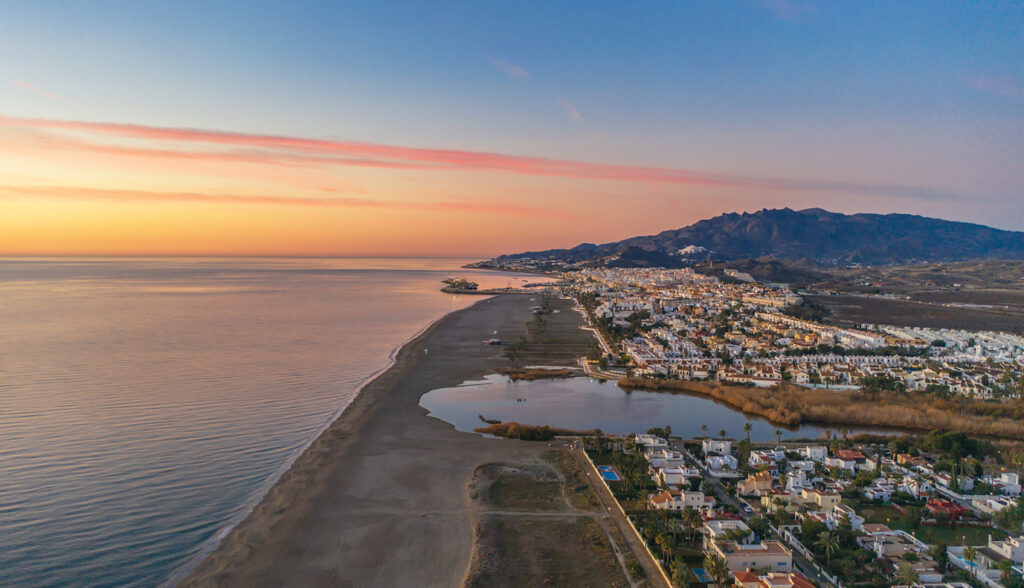
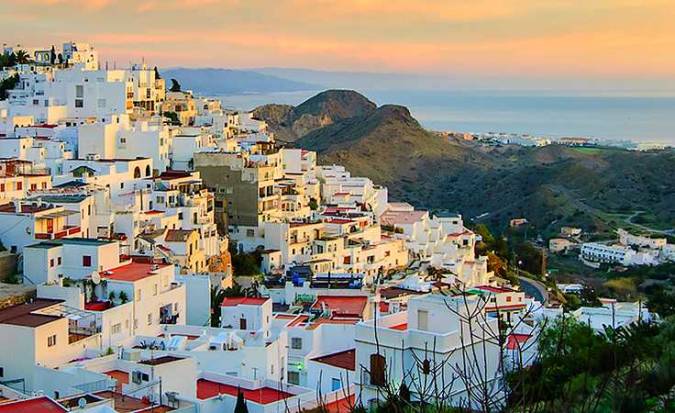
Tabernas Desert
The Tabernas Desert is a unique semi-desert landscape in Europe, located in the province of Almería in southeastern Spain. Covering approximately 280 km², this desert lies nestled between the Filabres, Alhamilla, and Gádor mountain ranges, which isolate it from the Mediterranean climate and give it very particular arid conditions.
Its climate is extremely dry, with annual rainfall below 250 mm and temperatures that easily exceed 40 °C in summer. This lack of rain, combined with a high evaporation rate, creates a landscape dominated by spectacular geological formations: gullies, dry riverbeds, badlands, and eroded ravines, with ochre, gray, and reddish tones.
The Tabernas Desert is also famous for its role in film history. Since the 1960s, it has served as a natural backdrop for numerous productions, especially spaghetti westerns, hosting films such as A Fistful of Dollars and The Good, the Bad and the Ugly. Today, some of these former sets have been transformed into theme parks open to visitors, such as Oasys MiniHollywood.
Despite its barren appearance, it hosts a surprising biodiversity adapted to the arid environment, with plant species such as esparto grass and broom, and animals like the common chameleon, the stone curlew, and the fox.
The Tabernas Desert represents not only an ecosystem of great ecological value but also a cultural and tourist emblem of Almería, where nature, cinema, and history intertwine in a unique setting.
Geoda de Pulpí
The Pulpí Geode is one of the most astonishing geological wonders in the world and is located in the Mina Rica, in the district of Pilar de Jaravía, in the municipality of Pulpí, province of Almería, in southeastern Spain. It was discovered in December 1999 by a group of mineralogists from the Madrid Mineralogical Group and has since attracted the interest of scientists and visitors from around the world.
What makes this geode special is its size and spectacular beauty. It is a cavity eight meters long and almost two meters high, lined inside with large gypsum crystals, some of which reach up to two meters in length. These crystals are transparent and perfectly formed, giving the interior of the geode an almost magical appearance, as if it were a crystal cave.
Unlike other geodes, which are usually completely closed and small, the Pulpí Geode is accessible and large enough for a person to enter and observe its interior. This makes it a unique geode in Europe and one of the largest and best-preserved in the world.
The formation of this geode dates back millions of years, when conditions of temperature, pressure, and chemical composition allowed the slow crystallization of gypsum within a natural cavity in the rock. This geological process is extremely rare and delicate, which is why the discovery of a geode with these characteristics is considered a true natural treasure.
Since its opening to the public in 2019, the Pulpí Geode has become an important tourist and scientific attraction, with access carefully controlled to ensure its preservation. Visiting it is a unique experience that allows you to delve into the heart of the Earth and discover the beauty that can lie beneath our feet.
